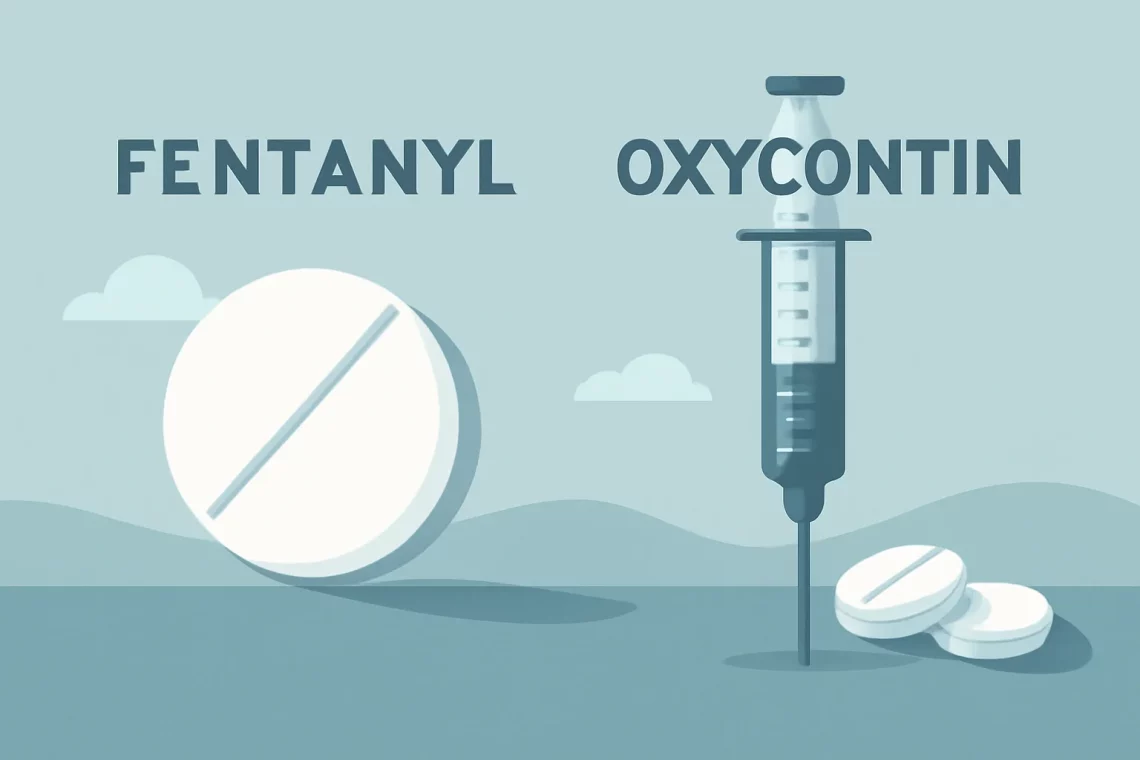
Fentanyl vs OxyContin: Understanding the Key Differences and Risks
Fentanyl and OxyContin are two powerful medications that belong to the opioid class, commonly used for pain management. Despite their effectiveness, they come with significant risks and potential for abuse. Opioids have been at the forefront of discussions regarding public health, especially given the alarming rise in opioid-related overdoses and deaths. Both fentanyl and OxyContin have been implicated in this crisis, raising important questions about their safety, efficacy, and the contexts in which they are prescribed.
Fentanyl is a synthetic opioid that is estimated to be 50 to 100 times more potent than morphine. It is often used in medical settings for severe pain management, particularly in patients who are tolerant to other opioids. On the other hand, OxyContin, which is a brand name for oxycodone, is an extended-release formulation that allows for continuous pain relief over a longer period. While both medications are effective in treating pain, their differing properties and potential for addiction make them subjects of concern in both medical and societal contexts.
The public’s understanding of these drugs is critical in addressing the opioid crisis and ensuring safe practices in pain management. As we explore the differences and similarities between fentanyl and OxyContin, it becomes essential to recognize the implications of their use, the dangers associated with misuse, and the regulatory measures surrounding them.
Understanding Fentanyl
Fentanyl is a synthetic opioid that was originally developed for medical use in the 1960s. It is primarily utilized in hospital settings for the management of acute and chronic pain, especially in patients undergoing surgery or those suffering from severe pain conditions. Fentanyl is available in various forms, including patches, lozenges, and injectable solutions, making it versatile in clinical applications.
One of the key characteristics of fentanyl is its potency. With a strength that can be up to 100 times greater than morphine, it is vital for healthcare providers to carefully assess each patient’s pain management needs before prescribing fentanyl. This high potency also poses significant risks, particularly in cases of overdose. The narrow therapeutic window of fentanyl means that the difference between an effective dose and a lethal dose can be minimal, making it critical for patients to use this medication under strict medical supervision.
The rise of illicit fentanyl has further complicated the landscape of opioid use. Illegally manufactured fentanyl is often mixed with other drugs, such as heroin or counterfeit pills, leading to an increased risk of accidental overdoses among users who may not be aware of the presence of fentanyl in their drugs. This illicit use has contributed to the growing opioid crisis, highlighting the need for increased awareness and education around the dangers of fentanyl.
In addition to its potential for abuse, fentanyl can lead to physical dependence and withdrawal symptoms. Patients who have been using fentanyl for extended periods may experience significant discomfort when attempting to discontinue use, necessitating a carefully managed tapering plan supervised by a healthcare provider.
Exploring OxyContin
OxyContin is a brand name for the extended-release formulation of oxycodone, an opioid analgesic used primarily for managing moderate to severe pain. It was introduced in the mid-1990s as a breakthrough in pain management, offering patients the ability to manage their pain over a longer duration with fewer doses. OxyContin is designed to release oxycodone gradually, allowing for consistent pain relief throughout the day.
While OxyContin can be effective for pain control, it also carries a significant risk of misuse and addiction. The formulation was initially praised for its extended-release properties, but over time, it became apparent that some individuals were manipulating the pills to achieve a quicker, more intense high. This led to widespread abuse and addiction, prompting regulatory changes and a reevaluation of how opioids should be prescribed and monitored.
The controversy surrounding OxyContin has been a focal point in discussions about the opioid crisis. Pharmaceutical companies faced scrutiny for their marketing practices, which some argue downplayed the risks of addiction associated with their products. In response to the crisis, many states implemented stricter regulations on opioid prescriptions, and healthcare providers were encouraged to explore alternative pain management strategies.
Despite these challenges, OxyContin remains a critical tool for managing pain in certain patient populations. It is essential for healthcare providers to conduct thorough assessments and consider each patient’s unique circumstances before prescribing this medication. Patients utilizing OxyContin should be educated about the potential risks and signs of misuse, as well as the importance of adhering to prescribed dosages.
Comparing Risks and Benefits
When comparing fentanyl and OxyContin, it is crucial to weigh the risks and benefits associated with each medication. Both drugs are effective for pain management, but their differing potencies and formulations lead to varied implications for patient safety and treatment outcomes.
Fentanyl’s high potency necessitates careful dosing and monitoring, particularly for patients who may not have prior experience with opioids. It is generally recommended for use in patients who are opioid-tolerant, meaning they have previously used opioids without experiencing adverse effects. For these patients, fentanyl can provide significant pain relief, particularly in acute settings.
In contrast, OxyContin’s extended-release formulation allows for a more stable pain control experience for patients who require consistent pain management over extended periods. However, the potential for misuse remains a significant concern. Patients may be tempted to crush or dissolve OxyContin to obtain a faster onset of effects, which can lead to overdose and addiction.
Both medications come with the risk of side effects, including respiratory depression, constipation, and the potential for developing tolerance and dependence. Therefore, it is essential for healthcare providers to engage in open discussions with patients about the risks associated with these medications and to explore non-opioid alternatives whenever possible.
Furthermore, the social implications of opioid use cannot be overlooked. The opioid crisis has led to an increase in overdose deaths, prompting a public health emergency that requires a multifaceted approach to address. This includes better education for both healthcare providers and patients, as well as the implementation of harm reduction strategies and access to treatment for those struggling with addiction.
Regulatory Measures and Future Considerations
The rise in opioid-related overdoses has prompted significant regulatory changes in the prescribing and dispensing of both fentanyl and OxyContin. Governments and health organizations are increasingly recognizing the need for a balanced approach to pain management that addresses the challenges posed by opioid use.
Prescription drug monitoring programs (PDMPs) have been implemented in many regions to track opioid prescriptions and prevent misuse. These systems allow healthcare providers to access patients’ prescription histories, helping to identify potential red flags and ensuring that opioids are prescribed responsibly. Additionally, training programs for healthcare providers emphasize the importance of evaluating pain management strategies and considering non-opioid alternatives.
The development of abuse-deterrent formulations of opioids, including OxyContin, aims to reduce the potential for misuse by making it more difficult to manipulate the medication. These formulations may include physical or chemical barriers that prevent crushing or dissolving the pills.
As research continues, the medical community is exploring innovative approaches to pain management that minimize reliance on opioids. Non-opioid medications, physical therapy, and holistic approaches such as acupuncture and mindfulness are gaining traction as effective alternatives to traditional opioid prescriptions.
Ultimately, the conversation surrounding fentanyl and OxyContin underscores the importance of informed decision-making in pain management. Patients and healthcare providers must work collaboratively to assess risks and benefits while prioritizing safety and efficacy in treatment plans.
In conclusion, the complexities surrounding fentanyl and OxyContin highlight the need for ongoing education, regulation, and innovation in the field of pain management. As we navigate the challenges posed by opioid use, a comprehensive approach will be essential in addressing the needs of patients while mitigating the risks of addiction and overdose.
**Disclaimer: This article is for informational purposes only and should not be considered medical advice. Always consult a healthcare professional for medical concerns or questions regarding medications.**




